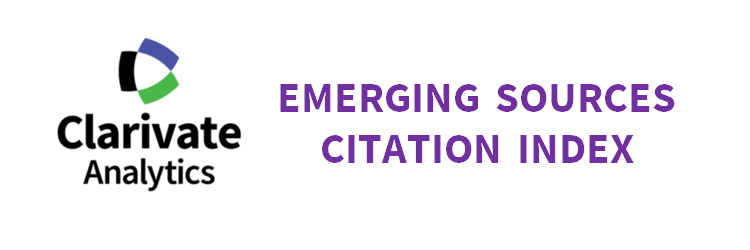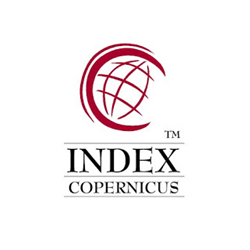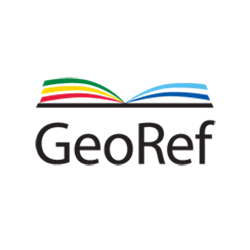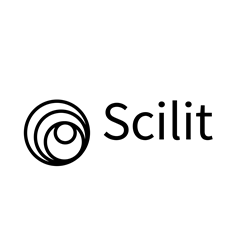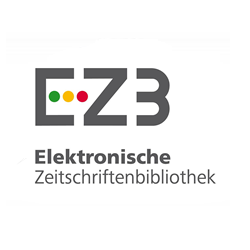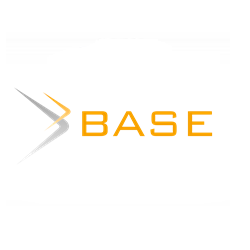An extension to iStar framework as alternative to support design decisions in the task analysis performed in the Human Computer Interaction Area (HCI)
DOI:
https://doi.org/10.17981/ingecuc.18.2.2022.05Keywords:
task analysis, GOMS, intentional modeling, Framework i, HTAAbstract
Introduction— The goal of this work is to present i* framework as alternative to support design decisions in the Human Computer Interaction Area (HCI), mainly, in the process of task analysis. We show i* framework a modeling language suitable for an early phase of software system modeling to understand the problem domain, also, that provides methods to represent tasks, as well as support design decisions the development that satisfies the process requirements from the beginning until the end. To achieve our goal, approaches addressed to analyze notations aimed at task analysis and their representation. Finally, we present suggestions for improvement in the i* framework through a proposed extension for refining task model, instantiating examples and justifying our proposal through peer review.
Downloads
References
X. Yang, J. Hyup Kim, & R. Nazareth, “Hierarchical task analysis for driving under divided attention,” Proc. Hum. Factors Ergon. Soc. Annu. Meet., vol. 63, no. 1, pp. 1744–1748, Nov. 2019. https://doi.org/10.1177/1071181319631022
D. Kieras, “GOMS models for task analysis,” UMich, Mich, USA, Analysis, 2004. Available from https://web.eecs.umich.edu/~kieras/docs/TA_Modeling/GOMSforTA.pdf
E. Yu, P. Giorgini, N. Maiden, J. Mylopoulos & S. Fickas, “Strengths and Weaknesses of the i* Framework: An Empirical Evaluation”, in E. Yu, P. Giorgini, N. Maiden, J. Mylopoulos & S. Fickas, Social Modeling for Requirements Engineering, Cambs, MAS, USA: The MIT Press, 2011, pp. 607–643. https://doi.org/10.7551/mitpress/7549.003.0025
F. Dalpiaz, X. Franch & J. Horkoff, “iStar 2.0 Language Guide,” arXiv [cs.SE , 2016. Available: https://arxiv.org/abs/1605.07767
D. Kieras & B. John, “The GOMS Family of Analysis Techniques: Tools for Design and Evaluation”, School of Computer Science, CMU, PGH, PA, USA, CMU-CS-94-181, 1994. Available from https://web.eecs.umich.edu/~kieras/docs/GOMS/John-Kieras-TR94.pdf
E. Yu, P. Giorgini, N. Maiden, J. Mylopoulos & S. Fickas, “Modeling strategic relationships for process reengineering,”, in E. Yu, P. Giorgini, N. Maiden, J. Mylopoulos & S. Fickas, Social Modeling for Requirements Engineering, Cambs, MAS, USA: The MIT Press, 2011, pp. 111–152. https://doi.org/10.7551/mitpress/7549.003.0005
G. Gema. (2006, Aug). I*wiki [Online . Available: http://istar.rwth-aachen.de/tiki-index.php?page=iStarQuickGuide. Available: http://istar.rwth-aachen.de/tiki-index.php?page=iStarQuickGuide
E. Yu, P. Giorgini, N. Maiden, J. Mylopoulos & S. Fickas, “A Reference Model for i*”, in E. Yu, P. Giorgini, N. Maiden, J. Mylopoulos & S. Fickas, Social Modeling for Requirements Engineering, Cambs, MAS, USA: The MIT Press, 2010, ch. 17. https://doi.org/10.7551/mitpress/7549.003.0024
A. Dix, J. Finlay, G. Abowd & R. Beale, Human-computer interaction, 3rd ed. NY, NY, USA: Pearson, 2004.
S. Barbosa & B. da Silva, Interação Humano-Computador. RJ, BR: Elsevier, 2010.
D. Norman & S. Draper, Cognitive engineering, In User Centered System Design: New Perspectives on Human-computer Interaction. HLLSDL, NJ, USA: LEA Inc. Pub, 1986.
O. Ayalon & E. Toch, “User-centered privacy-by-design: Evaluating the appropriateness of design prototypes”, Int. J. Hum. Comput. Stud., vol. 154, no. 4, pp. 1–10, Oct. 2021. https://doi.org/10.1016/j.ijhcs.2021.102641 CONFIRMAR PAGS.
S. Card, T. Thomas & A. Newell, The Psychology of Human-Computer Interaction. LDN, UK: Lawrence Erbaum Associates, 1983.
E. Yu, P. Giorgini, N. Maiden, J. Mylopoulos & S. Fickas, “Secure Tropos: Extending i* and Tropos to Model Security Throughout the Development Process,” in E. Yu, P. Giorgini, N. Maiden, J. Mylopoulos & S. Fickas, Social Modeling for Requirements Engineering, Cambs, MAS, USA: The MIT Press, 2011, pp. 363–402. https://doi.org/10.7551/mitpress/7549.003.0015
D. Moody, “The ‘Physics’ of Notations: Toward a Scientific Basis for Constructing Visual Notations in Software Engineering”, IEEE Trans. Software Eng., vol. 35, no. 6, pp. 756–779, Dec. 2009. Available: https://ieeexplore.ieee.org/document/5353439
D. Moody, P. Heymans, & R. Matulevicius, “Improving the Effectiveness of Visual Representations in Requirements Engineering: An Evaluation of i* Visual Syntax”, presented at 17th International Requirements Engineering Conference, IEEE, ATL, GA, USA, 31 Aug. - 4 Sept. 2009. https://doi.org/10.1109/RE.2009.44
T. Green, “Cognitive Dimensions of Notations Resource Site,” CAM.AC [Online . Available: http://www.cl.cam.ac.uk/%7Eafb21/CognitiveDimensions/
T. Green, “Instructions and descriptions: some cognitive aspects of programming and similar activities”, in S. Levialdi, V. Di Gesù & L. Tarantino (Less), AVI´oo: Proceedings of the Working Conference on Advanced Visual Inter- faces, NYC, NY, USA, ACM, 2000, pp. 21–28. https://doi.org/10.1145/345513.345233
A. Blackwell & T. Green, “Notational systems -- the cognitive dimensions of notations framework”, in J. M. Carroll, HCI Models Theories and Frameworks: Toward a multidisciplinary science. SF, CA, USA: Morgan Kaufmann Publisher, 2003, pp. 103–134. Available: https://www.elsevier.com/books/hci-models-theories-and-frameworks/carroll/978-1-55860-808-5
C. Blanco y P. Sánchez, “Aplicando evaluación por pares: análisis y comparativa de distintas técnicas”, presentado al Actas Simposio-Taller JENUI, UJI, CD REAL, ES, 10-13 Jul. 2012. Recuperado de https://core.ac.uk/download/pdf/41791778.pdf
M. Serrano & J. Leite, “A rich traceability model for social interactions”, presented at TEFSE ‘11: 6th International Workshop on Traceability in Emerging Forms of Software Engineering, ACM, WAI, HI, USA, 23 May. 2011. https://doi.org/10.1145/1987856.1987871
E. Yu, P. Giorgini, N. Maiden, J. Mylopoulos & S. Fickas, “Analyzing the Effectiveness of Human Activity System with i*,” in E. Yu, P. Giorgini, N. Maiden, J. Mylopoulos & S. Fickas, Social Modeling for Requirements Engineering, Cambs, MAS, USA: The MIT Press, 2011, pp. 669–691. https://doi.org/10.7551/mitpress/7549.003.0027
R. Eberts, User Interface Design. LDN, UK: Prentice-Hall, 1994.
S. Munir & A. Nadeem, “Cognitive modelling for user interface design in HCI: A comparative analysis on cognitive models,” LGU J. Comp. Sci. Info. Tec., vol. 4, no. 2, pp. 117–129, Jun. 2020. https://doi.org/10.54692/lgurjcsit.2020.0402138
R. Prates & S. Barbosa, “Introdução à Teoria e Prática da Interação Humano Computador fundamentada na Engenharia Semiótica”, submetido ao XXVII Congresso da Sociedade Brasileira de Computação Jornadas de Atualização em Informática, JAI, RJ, BR, 18-23 Jun. 2007. Available from http://www3.serg.inf.puc-rio.br/docs/JAI2007_PratesBarbosa_EngSem.pdf
F. Paternò, “ConcurTaskTrees: An Engineered Approach to Model-Based Design of Interative Systems”, In D. Diaper & N. A. Stanton, The Handbook of Analysis for Human Computer Interaction, MHW, NJ, USA: LEA, 2002, pp. 483–501. Available from http://giove.isti.cnr.it/attachments/publications/2003-A1-07.pdf
A. Oliveira, Engenharia de Requisitos Intencional: Um Método de Elicitação, Modelagem e Análise de Requisitos. RJ, BR: PUC Rio. 2009. Available: https://www.maxwell.vrac.puc-rio.br/colecao.php?strSecao=resultado&nrSeq=13061@1
J. Nielsen, Usability Engineering. SN FCO, CA, USA: Morgan Kaufmann, 1994. Available: https://www.nngroup.com/books/usability-engineering/
X. Zhou, F. Teng, X. Du, J. Li, M. Jin, & C. Xue, “H-GOMS: a model for evaluating a virtual-hand interaction system in virtual environments”, Virtual Reality, pp. 1–26, Jul. 2022. https://doi.org/10.1007/s10055-022-00674-y
P. Setthawong & R. Setthawong, “Updated Goals Operators Methods and Selection Rules (GOMS) with Touch Screen Operations for Quantitative Analysis of User Interfaces”, Int. J. Adv. Sci. Eng. Inf. Technol., vol. 9, no. 1, pp. 258–265, Jan. 2019. https://doi.org/10.18517/ijaseit.9.1.7865
D. Cunha, R. Duarte & C. Cunha, “KLM-GOMS Detection of Interaction Patterns Through the Execution of Unplanned Tasks”, In ICCSA 2021, Computational Science and Its Applications. CAL, IT: Springer, 2021, pp. 203–219. https://doi.org/10.1007/978-3-030-86960-1_15

Downloads
Published
How to Cite
Issue
Section
License
Copyright (c) 2022 INGE CUC

This work is licensed under a Creative Commons Attribution-NonCommercial-NoDerivatives 4.0 International License.
Published papers are the exclusive responsibility of their authors and do not necessary reflect the opinions of the editorial committee.
INGE CUC Journal respects the moral rights of its authors, whom must cede the editorial committee the patrimonial rights of the published material. In turn, the authors inform that the current work is unpublished and has not been previously published.
All articles are licensed under a Creative Commons Attribution-NonCommercial-NoDerivatives 4.0 International License.


 English
English
 Español (España)
Español (España)
